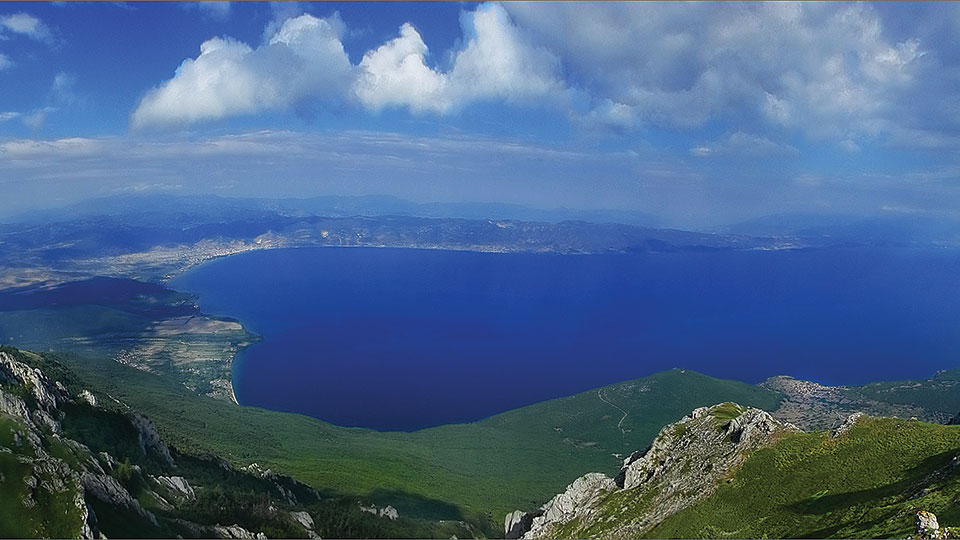
Plaoshnik is an outstanding archaeological complex with cultural layers of prehistory, antiquity and the Middle Ages
Location of Plaosnik
The site Plaosnik is located in the southern foothills of the higher (western) hill of Ohrid, on a leveled plateau, between the citadel of the Samoil Fortress and the church of St. Jovan Kaneo on the shores of the Ohrid Lake. Plaoshnik is an outstanding archaeological complex with cultural layers of prehistory, antiquity and the Middle Ages.
Archaeological findings in Plaoshnik
The first archaeological interventions of Plaoshnik occurred in the period from October 1942, until May 1943 (with interruptions), on the interior of the remains of the Sultan Mehmed Mosque organized by the Office of Antiquities in Ohrid, headed by its head Kiril Prlicev, and then with Dimce Koco. The remains of the old St. Clement's church and the grave of St. Clement of Ohrid were also found.
The total results of these archaeological excavations were published by Professor Dimce Koco in 1948. In the period from 1960-1964-1966, archaeological excavations of Imaret (Plaoshnik) are being performed again, revealing in parallel the early Christian policonchal church from the 5th -6th century. In the months August-September 1965 the Republic Institute for the Protection of Cultural Monuments-Skopje carried out archaeological-conservation research in the area of St. Clement's church "St. Panteleimon", after which conservation works were performed.
A chronology of research at the site Plaosnik
Greater operations were realized in the period from 1999-2002. During that period, revision archaeological researches were performed inside and around the Church of St. Clement, where the phases of the building were fully discovered and the monumental three-nave Early Christian basilica was completely discovered. It is composed of narthex, atrium, baptistery, utility rooms and wide courtyards in the eastern part of the complex. In the spacious atrium on the north side of the building a large number of marble columns with bases and capitals have been discovered. In the narthex and the northern nave from the basilica there are preserved mosaic floors in several stages.
The most representative part of this basilica is its monumental baptistery, located south of its apse, with an exceptionally preserved mosaic floor. It has a form of a rectangle, in which the central part is a circular piscine. It is a pool in which the baptism took place by a staircase on the east side, which went down to the pool. The mosaic decoration on its floor consists of geometric ornaments and symbolic plant and zoomorphic representations. Here, there are stylized representations of vines with bunches, leaves, flowers and quite realistically represented domestic and wild animals and birds, like lamb, lion, peacock, cock, bar birds. In the circular fields of the floorboard, formed by two interlaced strips, among other representations, there are also various forms of crosses, among which is the swastika.
Renewal of the Saint Clement's church on Plaoshnik
All activities on this site were undertaken within the project Renewal of the St. Clement's Church of St. Pantelejmon on Plaosnik in Ohrid on the occasion of the jubilee "2000 Years of Christianity in Macedonia and the World", proposed and implemented by the competent institution NI Institute for the Protection of Cultural Monuments and Museum-Ohrid, supported and financed by the Government of the Republic of Macedonia, the Macedonian Orthodox Church, as well as by the entire Macedonian nation.
The restoration was performed on the foundations of the old St. Clement's church and the foundations of its extension. It was conducted after the previous removal of the remains of the Sultan Mehmed mosque in the interior of which were the remains of the church and the tomb of St. Clement of Ohrid. Basically, parts of the Islamic sacred facility are portrayed as a testimony to its existence and a testimony of a historical time in this space. In parallel, the protective roof structure was built over the early Christian polyconchal church, as well as the conservation of the mosaic floor surfaces of the baptistery of the same sacred building. All activities of this project were completed with a great national council and a lithium procession of the relocation of the relics of St. Clement of Ohrid from the second cathedral church in Ohrid, H. Bogorodica Perivlepta of Deboj, to the old St. Clement's Church of St. Pantelejmon and the tomb of St. Clement on Plaoshnik, as well as with the sanctification of the renewed church on August 11, 2002.
New systematic archaeological research on Plaoshnik
Archaeological researches and conservation and restoration works also continued in a smaller volume between 2003 and 2006. During this period, certain areas were researched to the west of the narthex of the monumental three-nave basilica. The areas under the mosaic floors of the narthex and the baptistery of the same early Christian building were also explored. During this time, the conservation works on the mosaic floors of the baptistery were completed. Protective roof structures were placed above the two baptisteries of the early Christian churches on Plaoshnik.
With the latest systematic archaeological research, which took place from March to December 2007 and during 2008, the implementation of the second phase of the "Plaosnik" project started, i.e. the implementation of the project Renewal of St. Clement's University at Plaosnik started in Ohrid. Within these research activities, which continued and still last, the space of the so-called St. Clementine soil was completely researched. The aim is to determine the remains of the existence of the monastery lodgings. In this case, it would also mean defining of the spatial conditions for the functioning of the so-called Ohrid Literary School, or the Ohrid Literary Academy, or as it is already known as St. Clement's University.
















